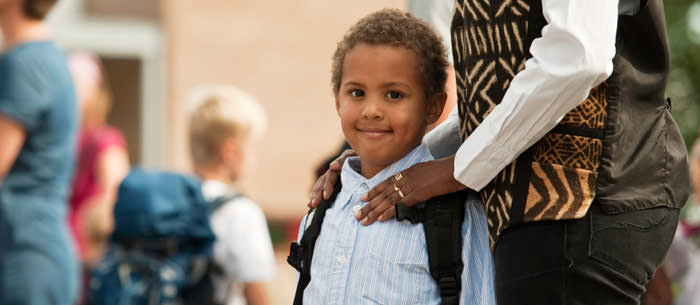Right before Emma was entering third grade, she was forced into a role many parents worry about: the “new kid.” The school boundaries changed in Emma’s Potomac, Maryland neighborhood. Though 50-60 children were affected, Emma would be the only third grade girl who had to move to a new school.
Mom, Jodi Chen worried about Emma’s ability to form close friendships with her new classmates (what parent wouldn’t worry?), so she took action to ease the transition. She found the Brownie troop at the new school and they invited Emma to attend meetings and field trips. She met with the principal and asked about events she knew Emma would be interested in, like Variety Shows and Saturday club nights. Emma was happy to realize she could still do the things she loved — they’d just be in a new place or with new kids. Emma was invited on many play dates and is now a happy, well-adjusted student.
Being new doesn’t have to be as negative of an experience as parents might think. Experts Robi Ludwig, Psy.D, parenting expert for Care.com, and Anthony Pearson, school counselor at Sky View Elementary School in Mableton, Ga., author of “Guidance with Good Measure” and the American School Counselor Association’s 2011 “School Counselor of the Year” show how parents can help.
Communicate and Know Your Child
- Take your child’s personality and temperament into account.
Does he or she dive into the ocean or wade in slowly? A student’s age, personality and life experience impacts the way he or she deals with change. - Help your child feel more comfortable about being the new kid.
Let him know it’s normal to be nervous; everyone has nerves walking into a new environment. Remind him of his strengths and how and why he will be fine once his new school becomes familiar. - Be honest, but be positive.
If your child is struggling with the transition, saying “Buck up, kiddo, you’ll be fine” can come across as uncaring or indifferent. Let him voice his feelings. Saying something like, “I know this is tough, but we’re going to do our best to adjust” sends the message that transition can be hard, there are times we may feel out of sorts, but we are going to get through this as a family.
Create connections
- Preview the new environment.
Students (and most adults!) can feel more confident if they know what to expect. So set up a time to meet with your student’s new teachers. Tour the school with your child and point out cool things he may get excited about, i.e. the playground or hi-tech computer lab. - Join teams, groups and clubs ASAP.
Like Jodi Chen, look for clubs or activities that can connect your child to kids with similar interests. Whether that’s sports or scouts, music or art, there’s information about try-outs, meetings, and open houses. - Find family friends and reach out to other parents.
Many schools welcome parents onto the PTA or as volunteers. If you are new to town, see if there’s a group for newcomers, check out the local community center or park district. Chat with neighbors. Join a church or synagogue. Playdates and kid-friendly weekend outings will follow.
Find support and use it
- Meet with the school counselor.
Many couselors run “School Ambassador” groups which pair a new student with a student-leader that can show new kids the ropes. They may also run “Lunch Bunch” groups inviting all new students to meet. Most also have an open door policy where students can stop by or fill out a meeting request. Then, check in with the school counselor on occasion to see how your child is doing. - Know when your child needs professional help.
If his behavior drastically changes for two weeks or more, it might be time to seek out a professional consultation. Watch for eating and weight changes (eating too little or too much), sleep difficulties or problems at school. If he seems more tearful or isolated than usual, seek help from a mental health professional (your school counselor may also be able to recommend someone).
Remember, a parent’s positive attitude can go a long way in increasing his or her child’s ability to handle this changing, challenging time. A final ray of hope: “I have yet to have a student not adjust to their new school. Some take longer than others, but once the student starts to feel comfortable, knows the routine, and finds some friendly faces in the crowd, it will seem like he never missed a beat!” Pearson says.




